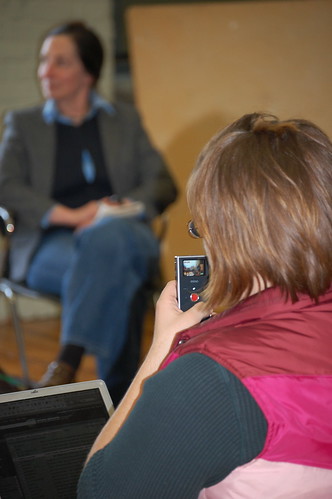As the worlds of public relations and marketing continue to evolve, many of us in the biz have been charged with explaining to clients and colleagues the effects social and new media are having on the industry.
This task alone proves to be a challenge – discussions about new media can range from how social networking and sharing portals can advance a company’s confidence level among consumers to what the heck a ‘Tweep‘ is.
But the fast-moving changes in the advertising and publicity arenas also highlight another hurdle: all of this new knowledge makes it easy for us to gloss over the true definitions of marketing and public relations themselves, in favor of explanations of more current trends and buzzwords.
So, let’s reel it back in for a moment. As social media is changing how the public digests information, it of course changes many of the functions of PR, as well. However, the mission remains the same – to create awareness and work with the media in all its forms to generate buzz and positive, objective press about a client.
The standard definition of public relations helps to frame the topic; as laid out by Wikipedia, PR is ‘the practice of managing the flow of information between an organization and its publics.’
In today’s tough economic times, ‘free press’ is more important than ever. Advertising dollars in media are in rapid decline, and traditional media is shrinking. Plus, PR can be tailored to work within traditional, nontraditional, and burgeoning outlets; it pairs well with new publicity tactics including social media, search engine optimization (SEO), blogging, podcasting, and other Web-based tools.
Further, because PR creates exposure through third-party outlets, it offers an added legitimacy to marketing campaigns by offering context and information.
According to the Public Relations Society of America (PRSA), the essential functions of PR include research, planning, communications, dialogue, and evaluation. These broad-brushed categories can be broken down even further to any number of substrates, including writing press releases, identifying appropriate outlets for potential publication of news, developing relationships with the media, managing language and streamlining the look and tone of all press materials, planning events and press conferences, creating a strong, relevant online presence, and recording results and returns, among many other tasks.
In short – the job is the same, but the toolbox is larger than ever before, and still being stocked with new, developing tactics on a daily – if not hourly – basis, through the advent of social-media-based PR and marketing.
Hey, I warned you about the metaphors.
In other news:
Vote for this blog in the Fuel Lines Social Media for Ad Agencies blog contest!
Jaclyn Stevenson is the director of public relations for Winstanley Partners. She just had her first fried Oreo.


